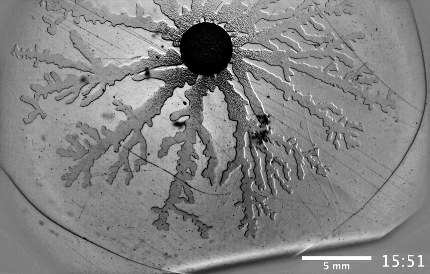Physics of bacterial motility

with Marc Hennes, Julien Tailleur, Kassem Hamze, Lina Hamouche, Soumaya Laalami, Harald Putzer, Simone Séror, Barry Holland, Mehdi Banaha, …
Most bacteria are capable of amazing collective behaviour; mass swarming is a way to rapidly colonize a surface, and likely a first step in the formation of biofilms, which are structures adopted by bacteria that allow them to resist antibiotics, the immune system (inside the body), cleaning (sewerage systems, medical instruments) et caetera. The mecanisms involved in mass swarming are still not understood. Some keys to an explanation might just have been found by a team of genetical biologists around Kassem Hamze, Daria Julkowska, Simone Seror and Barry Holland of the IGM in Orsay: migration is linked to the production of a powerful surfactant called Surfactine, and to hypermotility of the swarming cells.
We are investigating the forces at play at the onset and during migration, and studying the influence of environmental parameters such as humidity, gel stiffness and the like.
Last modified: 18 Jul 2020
